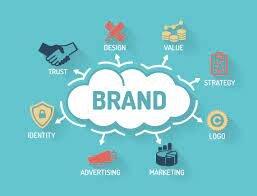Introduction to Visual Marketing
Visual marketing is a powerful strategy that involves using images, graphics, videos, and other visual elements to convey the brand message and values to its target audience. As part of a marketing 360 approach, visual marketing plays a crucial role in the modern digital world, where attention spans are short, and competition is intense. It helps in capturing and retaining consumers' attention, enabling brands to form a strong foundation in the highly competitive market.
Visual communication in marketing utilises human nature that responds heavily to visual stimuli and processes images faster than text. Brands use this to make visual content that is more appealing and memorable for their target audience and also helps brands stand out in the market. This strategy also allows brands to communicate their story and form an emotional connection with their audience.
The upsurge of social media platforms like Instagram, Pinterest, and TikTok is proof that audiences prefer visual content more. Thus, brands need to leverage this information and incorporate more visual elements into their marketing strategies to communicate the brand's core values and vision effectively. Visual content like reels, graphic posts, and aesthetic polls generate higher engagement rates, shares, and click-throughs compared to image or text-only posts or content.

Table of contents:
- ● Introduction to Visual Marketing
- ● Understanding Your Brand's Story
- ● Choosing the Right Visual Elements
- ● Crafting Compelling Visuals
- ● Platforms and Channels for Visual Storytelling
- ● Engaging Your Audience through Visual Storytelling
- ● Measuring the Success of Visual Marketing
- ● Case Studies of Successful Visual Marketing Campaigns
- ● Conclusion: Embrace Visual Marketing to Elevate Brand Success
Understanding Your Brand's Story
In the fast-paced digital world, brands need to create marketing strategies that go beyond mere products and services. To make a lasting impression, brands need to tap into the hearts and minds of their audience. To achieve the same, it is important to know your brand's story and build a lasting connection with your customers. This can be achieved through the strategic merging of visual communication in marketing and brand story.
Your brand story should be a narration defining who you are as a brand, what you stand for, and how your customers can benefit from you. A brand story is the heart and soul of your business, and by sharing it effectively via the means of visual communication in marketing, you can create an emotional bond that can help you tremendously as a brand. The relation of visual marketing of your brand story is based on the idea that says, "People do not just buy products; they buy into stories they can relate to and believe in."
Visual communication in marketing is a powerful arsenal in the brand storytelling game. By leveraging images, graphics, and videos, you can give life and shape to your brand story and use the same to communicate the mission of your brand. Showcasing the brand history via visuals evokes a sense of authenticity and belonging in the customer's mind. High-quality visuals can capture attention and convey the brand message faster than text alone. Brands should make use of photographs, graphic illustrations, or video content in the form of reels or shorts to show the brand's history and build a connection with them.
Visual marketing also allows you to highlight your unique selling points and the perks of your products or services and communicate the need of your brand in your target audience's life in a more compelling manner. Thus, it leads to more sales and a stronger bond with your customers.

Choosing the Right Visual Elements
Visual communication in marketing encompasses a wide array of visual elements in which each element plays a crucial role in explaining different aspects of the brand story. Here is a rundown of how you can use these elements and narrate your brand story to engage more customers:
Images are powerful storytellers that can evoke emotions and create a lasting impact in the consumer's mind. Images are the best visual element to showcase products, services, and brand vibes. Popular brands like Nike use its swoosh image with the iconic "Just Do It" slogan to impart the 'can do it' brand message that customers love.
Infographics help in conveying complex data and statistics in a visually appealing manner. They simplify information and make it more digestible for viewers. Airbnb uses infographics to illustrate travel trends, making its brand a go-to source for travel insights and inspiration.
Videos are the trending storytelling medium that engages audiences and generates more emotions. They can be used to show the brand message, brand story, testimonials, and many similar details effectively. Every brand is using video for branding nowadays.
Illustrations add uniqueness to brand storytelling and vibe. They are versatile and can be used in various formats, from packaging to website design. Dropbox's illustrations have become synonymous with its brand, creating a distinctive identity that resonates with its target audience.

Crafting Compelling Visuals
Crafting captivating visuals is a fundamental aspect of visual marketing as they powerfully communicate your entire brand story. To create visuals that align with your brand story and leave a lasting impression, brands need to keep in mind the following elements in visual design:
- Design: Effective design is the backbone of captivating visuals. It is essential to develop a style guide that outlines the typography, iconography, and photo aspects to maintain a cohesive look across all marketing channels. The design should mirror the essence of your brand story effectively and efficiently.
- Colour Psychology: Colours play a significant role in shaping emotions and have a major role in narrating the brand message and story. Brands need to leverage colour psychology and its effects on customers' minds to form a powerful brand. Choosing the right colour palette that resonates with your brand story and the emotions you want to evoke in your audience is crucial.
- Composition: The composition of your visuals determines how the elements are arranged and presented. A well-balanced and thought-out composition can appeal to the customer's eyes and grab the attention of the crowd
- Brand Storytelling: Every visual should tell a story that aligns with your brand narrative. Whether it is through a series of images, infographics, illustrations, or videos, ensure that each element showcases the brand message you wish to convey.
- Consistency: Consistency is key to building brand awareness and recall. Ensure that your visuals across various platforms and marketing channels maintain a consistent look and feel

Platforms and Channels for Visual Storytelling
In the modern digital era implementing visual marketing across various digital platforms presents can significantly impact a brand's success. Brands can make use of the given platforms to establish a strong visual online presence:
- Social Media: Social media platforms such as Facebook, Twitter, Instagram, and Pinterest are visual-centric, making them ideal places for visual marketing. Each platform presents distinct challenges that demand strategic planning and creativity. Brands can leverage the power of eye-catching graphics, images, and videos to capture the attention of their followers.
- Website: The website's landing page is the ultimate brand storyteller. Brands should leverage this platform for strong messaging. High-quality images, appealing design, and interactive elements can enhance the user experience and help you build a solid customer base
- Email Campaigns: Email marketing remains a potent instrument for engaging with current and potential customers. Incorporating visuals in emails can increase click-through rates and conversion rates
- Influencer Collaborations: Collaborating with influencers is a popular trend in visual marketing, especially on social media. Getting into partnerships with influencers who align with your brand values can help with reach and credibility

Engaging Your Audience through Visual Storytelling
With so many digital platforms grabbing the attention of consumers has become more challenging than ever. Brands need to use visual storytelling to cut through the noise and create a lasting impact on their target audience. Make use of the following tips to make content that engages the audience through visual storytelling and interactive elements:
- Storytelling Campaigns: Brands can use various visual mediums such as blog posts, images, and videos to tell a unique and compelling brand story. Use the campaign to emphasise the brand story and journey and ensure that you maintain consistent branding all the time
- User-Generated Content (UGC): User-generated content is a goldmine for authentic and relatable storytelling. Encouraging customers to share their experiences, stories, and photos related to a brand can foster a sense of community and trust. By leveraging UGC in their visual storytelling, brands can demonstrate that their products or services have a positive impact on real humans
- Interactive Elements: Interactive elements infuse life into visual storytelling, making it more engaging and memorable for the audience. Techniques like interactive infographics, quizzes, videos, and live polls create immersive experiences that allow consumers to participate actively

Measuring the Success of Visual Marketing
Since no marketing campaign guarantees 100% success, brands need metrics to measure the effectiveness of the marketing campaign to make changes and stay relevant in the crowd. It is essential to overview key metrics such as engagement rates, click-through rates (CTR), and conversion rates to comprehend how the campaign is performing and what needs improvement:
- Engagement Rates: Engagement rates quantify how actively the audience interacts with a visual marketing campaign. Metrics like likes, shares, comments, and retweets on social media or time spent on a website indicate the level of interest and involvement. A higher engagement rate suggests that the content resonates with the target audience, while a lower rate may indicate the need for improvements.
- Click-Through Rates (CTR): CTR measures the number of clicks an ad or promotional material receives compared to the total number of times it was shown to the audience. It is particularly relevant for display ads, email campaigns, and social media ads.
- Conversion Rates: Conversion rates are the ultimate measure of a visual marketing campaign's success. They indicate the percentage of users who complete a desired action, like making a purchase, filling out a form, or signing up for a newsletter. Tracking conversion rates provides a clear indication of how well the campaign drives tangible results

Case Studies of Successful Visual Marketing Campaigns
Brands have used the power of visual marketing to generate massive sales and revenue in the past. We have gathered real-life examples that demonstrate how brands have successfully utilized visual marketing to achieve results. Take a look at their strategies to enhance your marketing efforts:
- Nike's "Dream Crazy" campaign used impactful visuals and emotionally charged storytelling. Nike embraced a controversial figure to promote social justice and equality. The campaign resulted in increased brand visibility, higher engagement on social media, and a significant boost in sales
- GoPro leveraged user-generated content to highlight the versatility and adventure captured by its action cameras. This UGC strategy resulted in a strong sense of community, improved brand loyalty, and increased consumer trust
- Airbnb's "We Are Here" campaign focused on promoting diversity and inclusivity. The campaign conveyed a powerful message of belonging and acceptance, resonating with its global audience
Conclusion: Embrace Visual Marketing to Elevate Brand Success
Visual marketing is an indispensable tool for brands to craft compelling narratives and achieve unparalleled success. Utilising the tips mentioned above, brands can harness the emotive power of visuals to evoke deep emotions, establish authenticity, and make a lasting impact on their audience. By integrating visual marketing strategies into their campaigns, a business can foster stronger bonds with their customers, drive higher engagement, and cultivate unwavering brand loyalty. Embrace the potential of visual marketing to differentiate your brand in a saturated market and elevate your business to new heights of success.

Rahul Shevde



